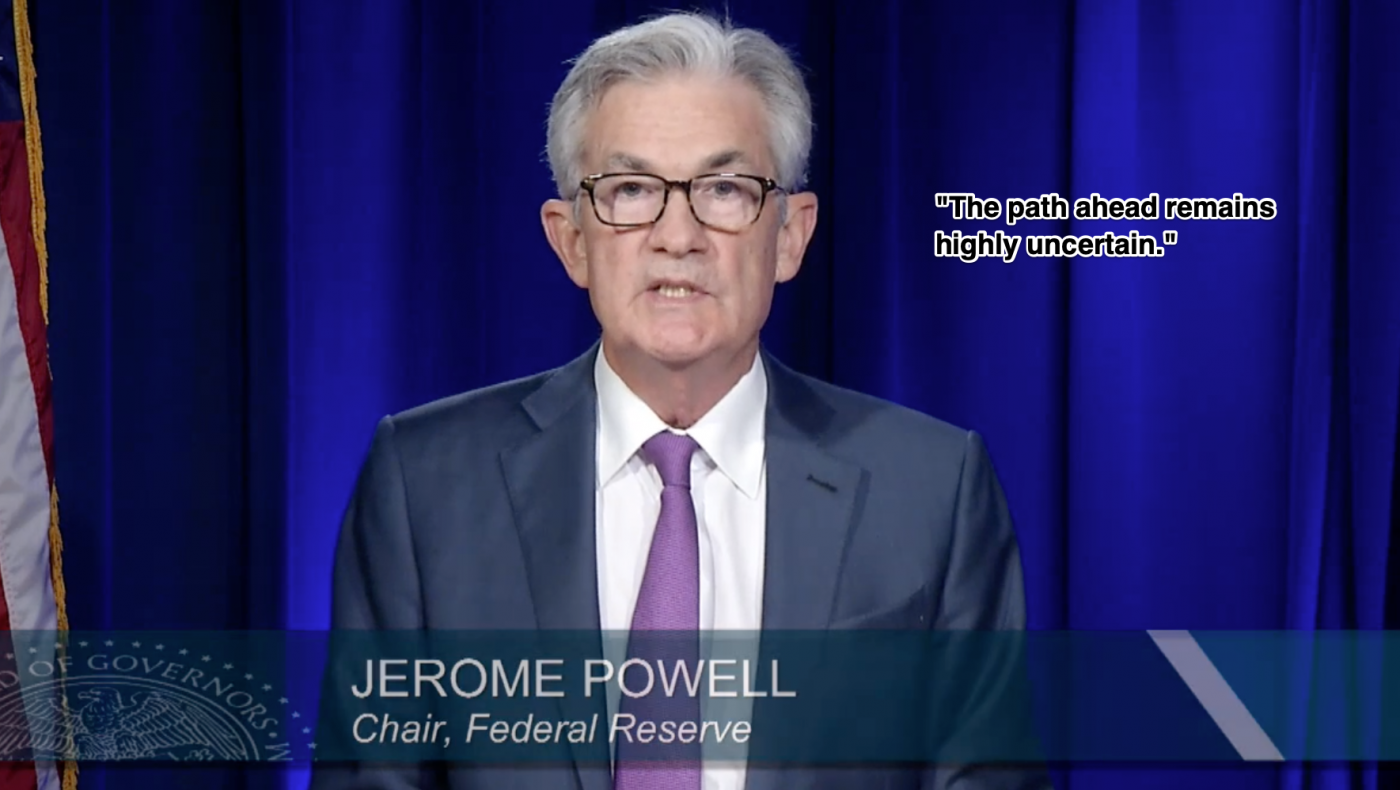
Traders across major prediction markets are growing increasingly convinced that the U.S. economy could dip into recession next year—thanks, in large part, to President Donald Trump’s sweeping new tariff order. On Kalshi, a regulated prediction platform, the probability of a U.S. recession in 2025 now stands at 61%, marking a near-doubling in odds since just March 20. Recession Bets Rise Sharply After Tariff Announcement These figures align closely with rival platform Polymarket , where users have currently priced in a 60% chance that the U.S. will experience two consecutive quarters of negative GDP growth—the standard recession definition used by the U.S. Department of Commerce. The sudden shift in sentiment follows Trump’s April 2 executive order imposing broad tariffs on all foreign imports, escalating tensions with key trading partners and sparking panic in capital markets. The fallout has been swift: equities tumbled, volatility surged, and safe-haven assets like gold and Bitcoin began catching a bid. Here’s What Pompliano Says While the policy move drew immediate criticism from economists and investors alike, some market commentators believe it could be part of a larger political strategy. Notably, Anthony Pompliano, investor and co-founder of Morgan Creek Digital, suggested that Trump might be intentionally triggering market instability to push the Federal Reserve into cutting interest rates. Pompliano pointed to the decline in 10-year U.S. Treasury yields, which dropped from 4.66% in January to 4.00% by April 5, as proof that investor expectations for rate cuts are growing. If Trump’s goal is to weaken the economy just enough to force monetary easing ahead of the election cycle, it may already be working. In an April 4 post on Truth Social, Trump didn’t shy away from pressing the Fed: “This would be a perfect time for Fed Chairman Jerome Powell to cut interest rates.” Such direct calls to the central bank—especially amid heightened economic uncertainty—are likely to increase pressure on policymakers navigating the delicate balance between inflation control and economic growth. The post Trump’s Tariff Shock Spurs 2025 Recession Fears: Odds Soar Above 60% appeared first on TheCoinrise.com .
The Coin Rise
You can visit the page to read the article.
Source: The Coin Rise
Disclaimer: The opinion expressed here is not investment advice – it is provided for informational purposes only. It does not necessarily reflect the opinion of BitMaden. Every investment and all trading involves risk, so you should always perform your own research prior to making decisions. We do not recommend investing money you cannot afford to lose.
While Bitcoin, Ethereum and Altcoins Continue to Fall, Binance Experienced Serious Changes! Did the Exchange Take a Position According to Market Conditions?

Binance, the world`s largest cryptocurrency exchange, announced the proof-of-reserve system to regain the decreasing trust in Bitcoin exchanges after the sudden bankruptcy of FTX. In this context, Binance, which publishes reserve reports at regular intervals, has published the 29th Report (snapshot date April 1) of its reserves. According to Binance’s official website, the reserve ratio (Binance holdings divided by user assets) for major cryptocurrencies is overcollateralized. Binance had also added the altcoin TRUMP, the token of US President Donald Trump, in its previous reserve report. Apart from Bitcoin (BTC), the report includes USDT, Ethereum (ETH), BNB, Solana (SOL), FDUSD, ENJ, 1INCH, CRV, MASK, HFT, BUSD, BOME, Hedera (HBAR), NEAR, Pepecoin (PEPE), SUI, WIF and TRUMP were featured. Accordingly, users` Bitcoin assets decreased by 2.48% compared to the previous report, falling to 612,000 BTC; while USDT assets decreased by 3.67%, falling to 28.32 billion. Finally, when looking at users` Ethereum assets, it was seen that they decreased by 2.71% to 5.465 million ETH. According to the latest report, the exchange has sold a large amount of its excess cryptocurrency assets. Binance still holds all of the assets that users normally own, but according to the previous report, the exchange has sold more cryptocurrencies than it did in the previous report, but in the new report, it seems that it has sold them. Still, Binance’s latest proof of reserves shows that BTC, USDT, ETH, and BNB reserves are collateralized at 100.99%; 104.42%; 100.03% and 111.53% respectively. You can access Binance`s latest Proof of Reserves report here. *This is not investment advice. Continue Reading: While Bitcoin, Ethereum and Altcoins Continue to Fall, Binance Experienced Serious Changes! Did the Exchange Take a Position According to Market Conditions? The Coin Rise

Markets in Freefall: Is the Credit Market Forcing the Fed’s Hand?
Financial markets are in a meltdown and every leg lower is strengthening expectations in the credit market that the Fed will soon offer support. Bitcoin (BTC), the leading cryptocurrency by market value, traded 8% lower at $75,800 and the U.S. stocks were on track for their worst three-day performance , with S&P 500 futures down roughly 5% on Monday alone and losses approaching 15% overall. The Fed has a history of intervening during financial meltdowns with rate cuts and other stimulus measures. So, traders, having become accustomed to liquidity support, are betting that the Fed will act similarly this time. According to the CME FedWatch Tool , the federal funds futures market is now pricing in as many as five rate cuts in 2025. For the upcoming May 7 meeting, there`s a 61% probability of a 25 basis point cut, which would lower the target range to 4.25–4.50%. By year-end, the market sees the fed funds rate falling as low as 3.00–3.25%. The risk-off, coupled with the growth scare and Fed rate cut bets, is giving Trump administration what it wants – plunging Treasury yields. The all-important 10-year yield — the benchmark for the U.S. economy — has dropped to 3.923%. The popular narrative is that lower yields would make it easier for the Treasury to refinance trillions of dollars in debt in the coming 12 months, which is why the Trump administration may be more tolerant of the asset market swoon. This refinancing urgency stems from a policy shift under former Treasury Secretary Janet Yellen, who moved from longer-dated coupon issuance to short-term Treasury bills. Since 2023, about two-thirds of the deficit had been financed through bill issuance — short-term debt with rates hovering around 5%. While this may have temporarily supported liquidity, it created a ticking time bomb of expensive short-term debt that now needs to be rolled over. The Coin Rise











